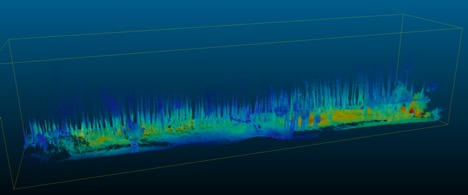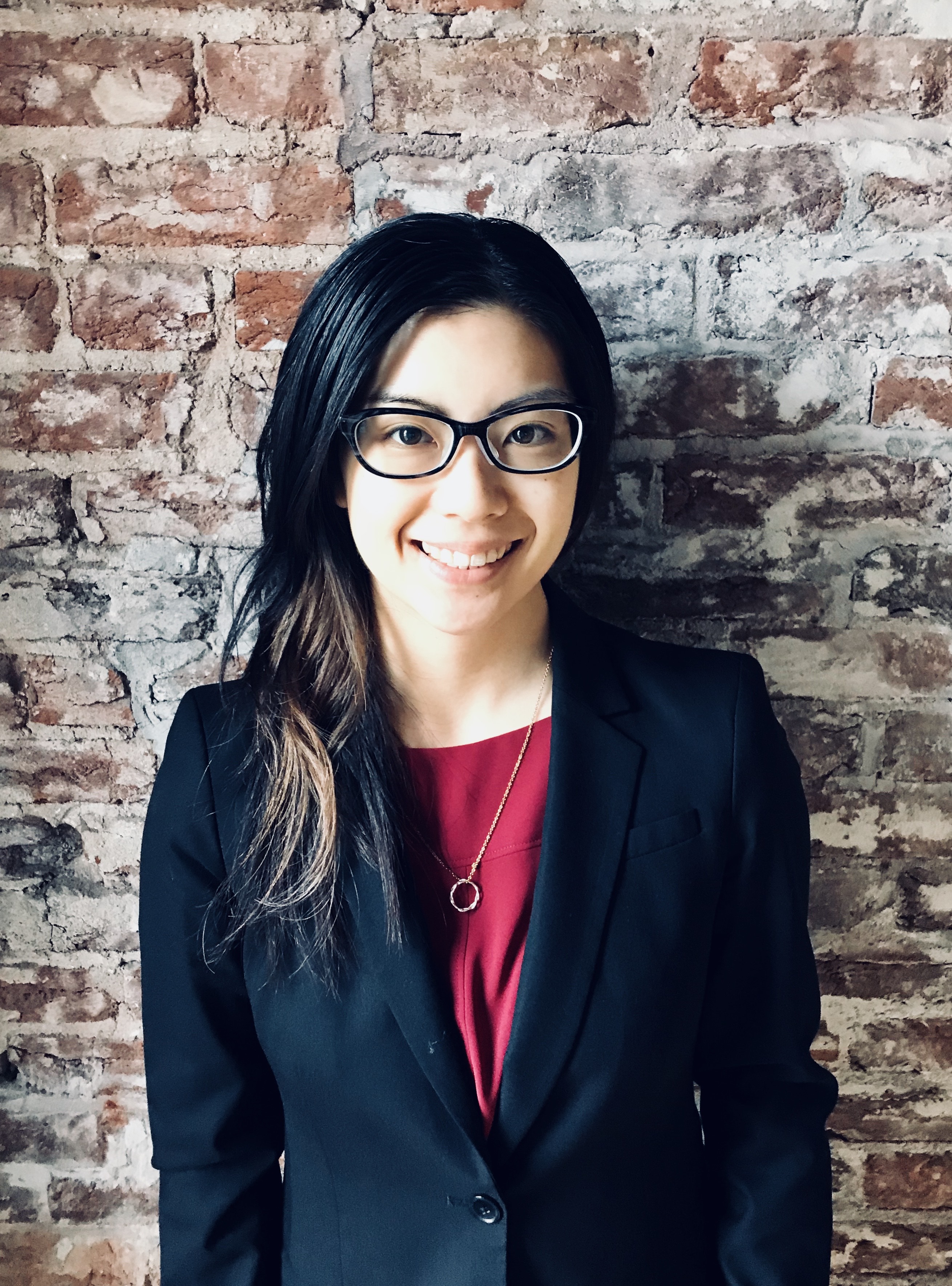Erika Suzuki of the Department of Energy’s Lawrence Berkeley National Laboratory (Berkeley Lab), tied for first place in a September competition that featured technology pitches to an audience that included tech-transfer experts and investors.
The aim was to promote the commercial viability of a range of technologies developed at DOE national laboratories.
Suzuki, program officer for the Applied Nuclear Physics Program in Lawrence Berkeley National Laboratory’s Nuclear Science Division, shared the $25,000 prize from the National Lab Accelerator Pitch Event (see a related article) with Scott Compel, a postdoctoral researcher at Lawrence Livermore National Laboratory (LLNL). The event was held at the University of California, Davis satellite campus in San Ramon, California.
Suzuki won for her pitch on a 3D radiation mapping platform developed by a Berkeley Lab team. She had earned the right to compete in the competition after winning first place in a Berkeley Lab-specific pitch competition. Compel won for his pitch on “MetalMonomers,” a class of LLNL-created materials that have antiobiotic properties and could be useful for medical applications. Judges selected the two winners from a field of 12 pitches.
The Berkeley Lab-developed portable mapping platform, the Localization and Mapping Platform (LAMP), which can reveal the location of radioactive and nuclear material while mapping their surroundings in 3D, can be hand-carried or mounted on drones, vehicles, or robots. Its applications range from environmental cleanup to national security. A different prototype developed with the same 3D mapping technology, called PRISM (for Portable Radiation Imaging, Spectroscopy, and Mapping) recently won an R&D 100 Award (see a related article).
In this Q&A, Suzuki describes her work and her team’s work on this gamma-ray and neutron-mapping technology, which has been field-tested at the site of the Fukushima nuclear power plant accident and at other locations.
Q: What is the status of this Lab technology, and what are next steps in its development?
A: Our program has developed several prototype 3D radiation-mapping systems that have been fielded in measurement campaigns at various government facilities as well as in real-world environments. These environments include the Fukushima Dai-ichi Nuclear Power Plant and Exclusion Zone. There is ongoing research and development to continue to develop the technology and there are new, exciting capabilities on the horizon.
The Lab’s Intellectual Property Office is now working on licensing the technology for commercialization.
Q: Can you describe what it is like to participate in these field tests, and how have the results from these field tests been put to use?
A: I have had the unique opportunity to participate in several technology demonstrations and field measurements with our 3D radiation mapping technology in various capacities. I have served as measurement coordinator, translator, drone pilot, and system operator. It’s really rewarding to be able to participate in these measurements because you gain perspective on the potential positive impacts that the technology can have toward making radiation mapping safer and more efficient.

Erika Suzuki pilots a drone equipped with a LAMP radiation detection and mapping system in a 2019 technology demonstration. (Courtesy of Erika Suzuki)
For example, our team has participated in several measurement campaigns and demonstrations in Fukushima Prefecture to map radiation in evacuated neighborhoods, as well as map contaminated areas at the Fukushima Daiichi Nuclear Power Plant, the site of the 2011 accident. It was a really humbling experience because we were able to see firsthand how the technology could be used to help direct cleanup and decontamination efforts and enable people to return to their homes. The data that we collect at these measurements helps us learn and improve the systems and algorithms for data fusion, mapping, and visualization.
Q: What is your hope for how this technology platform will be improved and used in the future?
A: Our real-time, 3D radiation mapping technology provides immediate, actionable information for end users about the location of radioactive or nuclear material in the context of the local environment. The intuitive 3D mapping shows features in the local environment, such as cars, buildings, people, and other objects in addition to highlighting the radioactive source – usually in color – and doesn’t require a scientist to interpret and communicate.
This mapping capability, combined with the LAMP system’s platform flexibility – it can be handheld or on a drone, ground robot, or other vehicle – enables faster, safer, and more efficient ways to locate and map radioactive sources. Our research program is continuing to leverage advancements in robotic platforms, machine learning, new types of radiation detectors, and new visual sensors, such as LiDAR – a laser-based distance-measuring system – to drive exciting new innovations in radiation detection and mapping.
We hope that this technology will be used in the future to save lives by eliminating the need to risk lives to map a potentially dangerous, radioactive area or hunt for nuclear threats on foot, as well as by enabling a faster and more efficient response by first responders the aftermath of a nuclear accident or incident.

This image shows a bamboo forest mapped by an LBNL 3D radiation mapping system in Fukushima Prefecture. The colors show relative levels of radioactivity, with red and orange areas indicating higher radioactivity. (Credit: Berkeley Lab)
Q: How did you prepare for the pitch competition?
A: I worked closely with my pitch coaches and mentors at Berkeley Lab, including Russell Carrington and Peter Fiske, over several weeks to prepare for this pitch competition. They provided a lot of constructive feedback and support and were an integral part of the pitch team.
Kai Vetter, our program head in the Applied Nuclear Physics program in the Lab’s Nuclear Science Division, helped hone the story and motivations for the pitch, and the research team also prepared one of the prototype LAMP systems to enable me to bring one to the competition.
It made a huge difference to be able to bring the actual system and put it down on the table in front of the judges and the audience and tell them that it’s covered in scratches and dents and dirt because we’ve already successfully fielded it all around the world at many experiments and technology demonstrations.
Q: Any other comments about your selection as a winner in the competition?
A: I participated in the DOE Energy Innovation Corps (Energy I-Corps) program, which taught our team many of the skills that we used to win the pitch competition, including crafting and presenting a compelling and concise pitch, collecting and analyzing relevant data through market research and customer discovery, and understanding the possible applications for which our technology can have a significant impact.
As part of the program we conducted 75 interviews, delivered over a dozen test pitches on our technology over two months, and engaged with stakeholders and potential customers. Our team graduated from the program in fall 2017 and continues to use many of the skills and lessons that we learned.
Our winning pitch is a modified – and significantly improved – version of our final I-Corps program pitch from the closing session. During the pitch event, we received feedback that our technology was one of the most mature lab technologies presented and that delivery of the pitch was compelling and covered the key points and criteria well.
The award money we received will support continued commercialization efforts, and efforts to find new users for the technology.
More:
- National Lab Accelerator Pitch Event video
- National Lab Accelerator Pitch Event photos
- Researchers jump into DOE ‘shark tank’ (Lawrence Livermore National Laboratory)
- Berkeley Lab Innovations Recognized With 3 R&D 100 Awards
###
Founded in 1931 on the belief that the biggest scientific challenges are best addressed by teams, Lawrence Berkeley National Laboratory and its scientists have been recognized with 13 Nobel Prizes. Today, Berkeley Lab researchers develop sustainable energy and environmental solutions, create useful new materials, advance the frontiers of computing, and probe the mysteries of life, matter, and the universe. Scientists from around the world rely on the Lab’s facilities for their own discovery science. Berkeley Lab is a multiprogram national laboratory, managed by the University of California for the U.S. Department of Energy’s Office of Science.
DOE’s Office of Science is the single largest supporter of basic research in the physical sciences in the United States, and is working to address some of the most pressing challenges of our time. For more information, please visit energy.gov/science.
